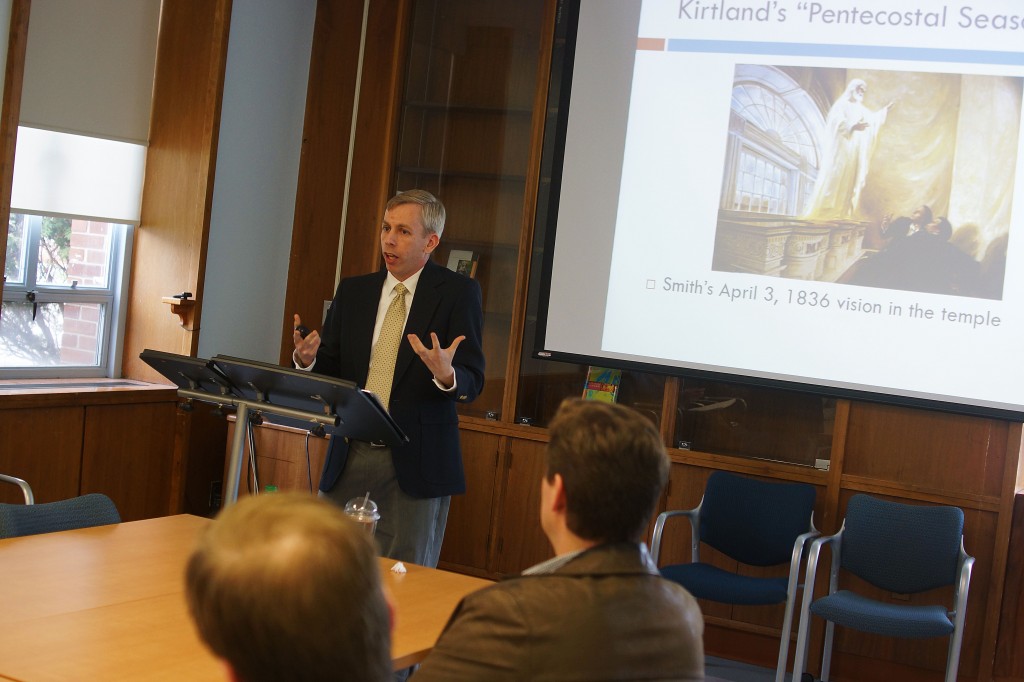
The subject of the divided Mormon religion brought listeners together in David Howlett’s talk “Sharing a Temple, Contesting a Sacred Site.”
Howlett, an assistant professor of religion at Skidmore College, gave the talk as part of the Institute for Advanced Studies in Humanities (IASH) speaker series. Howlett is a member of the Community of Christ, which is the second-largest Mormon denomination in the world. He spoke about the Kirtland Temple in Kirtland, Ohio, which was the first temple built for the Latter-day Saint movement, and the rift it has caused within the religion.
After the founder of Mormonism, Joseph Smith, died in 1844, a crisis of succession occurred that resulted in the first major division in Mormon theology between the Church of Jesus Christ of Latter-day Saints (LDS) and the Community of Christ.
According to Howlett, the convergence of these two religions occurs in many spaces, but the Kirtland Temple, where he used to be a tour guide, is one of the most unique. It is currently owned by the Community of Christ, despite its significance to many LDS church members.
“When I was giving a tour, I would have people realize halfway through that we aren’t LDS,” Howlett said. “And many feel alienated and confused by this.”
He went on to explain the mixed reactions that LDS church members have about the Community of Christ’s ownership of the important temple. Some accept the differing beliefs, some attempt to convert members and others demands for the return of the temple to the LDS organization.
According to Howlett, LDS members’ varying degrees of opposition over the temple is a stark contrast to the Community of Christ’s more cooperative attitude.
“While the Community of Christ allows the LDS to use the temple, there is still a bit of overt contestation and this has worked out because it means that people can disagree while still cooperating,” Howlett said.
Howlett used this conflict to address that arguments about spiritual locations are common within most religions, and that they generally reiterate the importance of these locations.
“In the process of something becoming special or sacred, sometimes people argue,” Howlett said. “And sometimes, it is that certain amount of contestation that makes something truly special.”
In reference to the development of Mormonism in general, Howlett compared the development of the religion over time with the social development of the United States.
“There are multiple Mormon denominations and ways of thinking and they all have adapted to the changing landscape of American culture in different ways,” Howlett said.
The question-and-answer period delved into other aspects of Howlett’s research and Mormonism in general, including his visits with Mormon groups in India and the relationship between Mormon doctrines and aestheticism.
According to Doug Jones, event organizer and a visiting assistant professor of religious studies, this is the second-to-last talk in a series designed to unite campus through conversations about controversial subjects.
“This series of speakers was created to start a conversation on campus about religion,” Jones said. “Religion is an interesting and engaging way to bring people from different disciplines together.”


